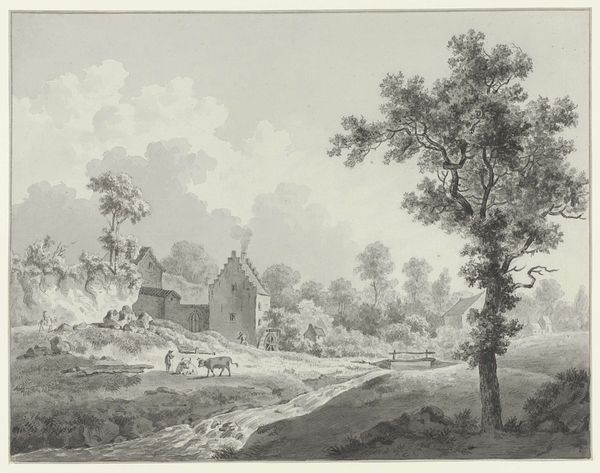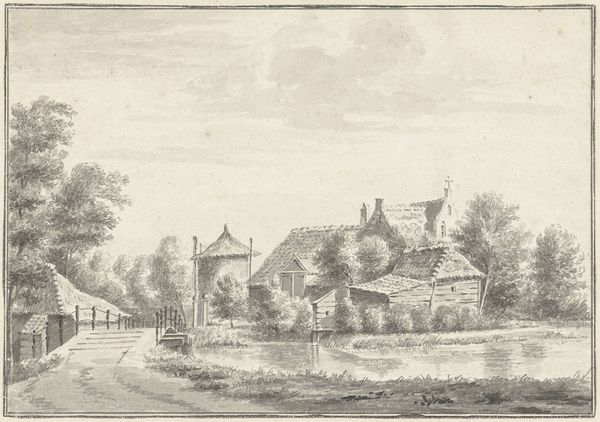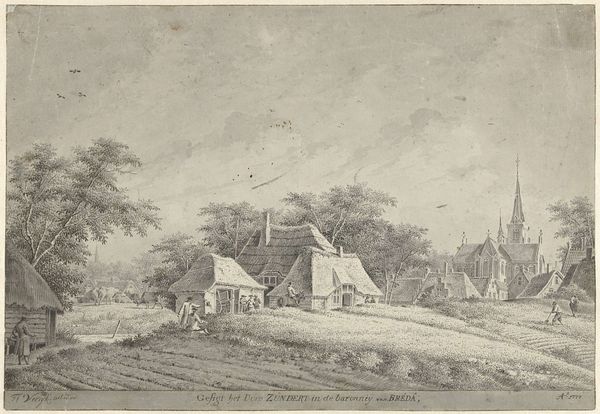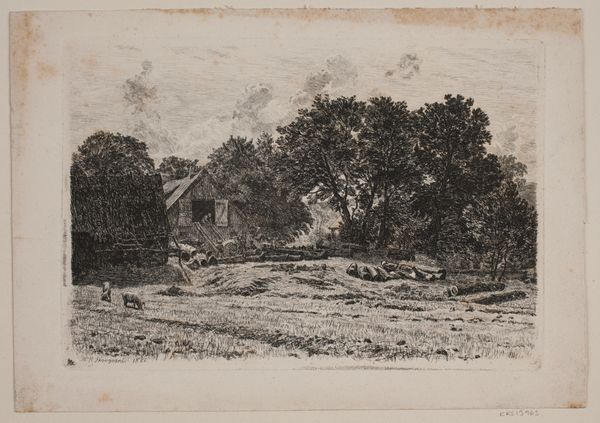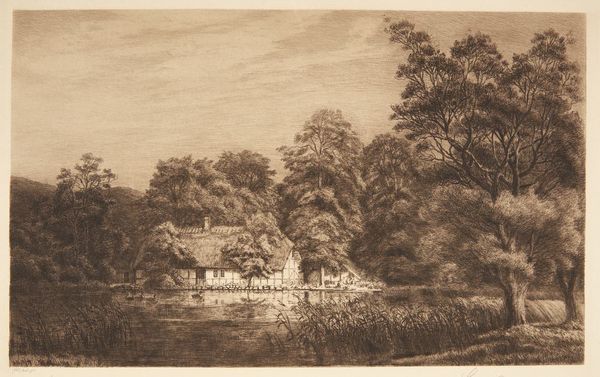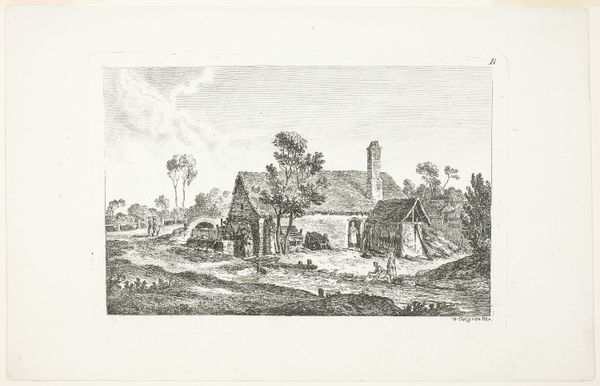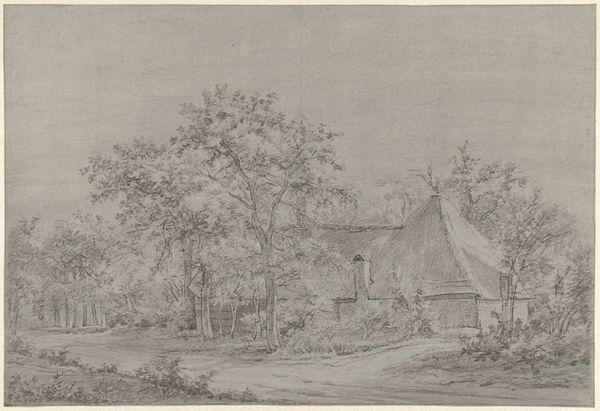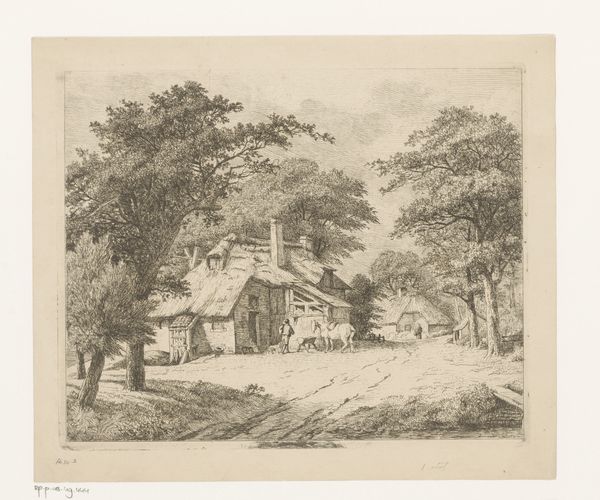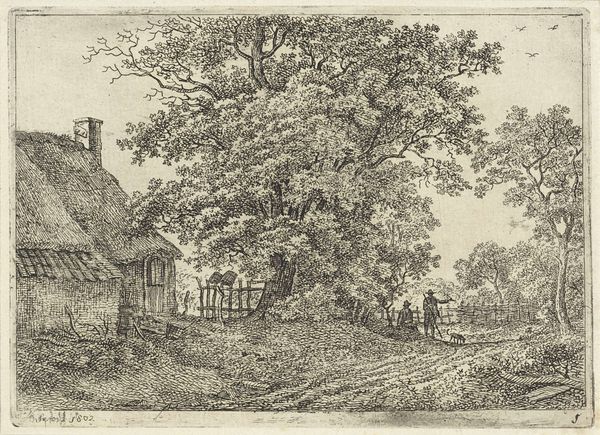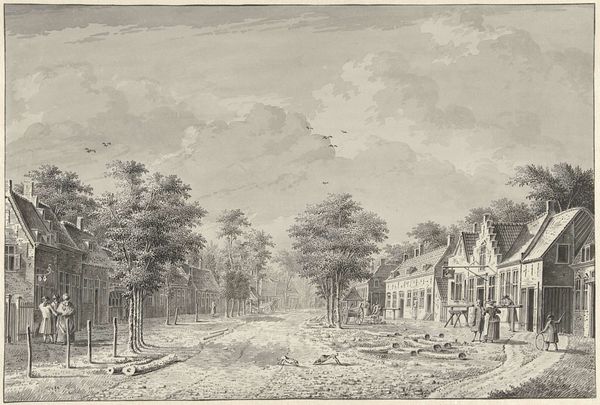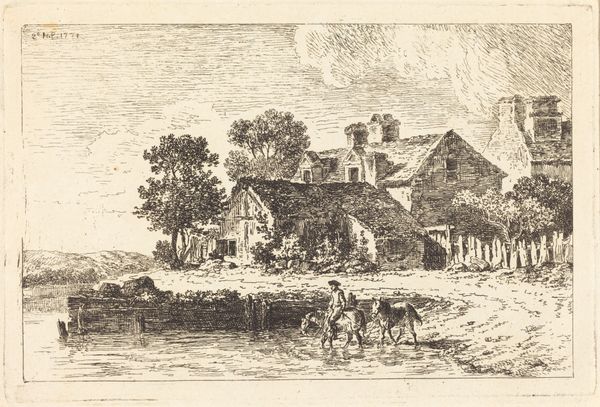
drawing, paper, pencil, graphite
#
drawing
#
landscape
#
paper
#
romanticism
#
pencil
#
graphite
#
cityscape
Dimensions: sheet: 2 1/2 x 3 7/8 in. (6.4 x 9.8 cm)
Copyright: Public Domain
Curator: It’s rather haunting, isn’t it? Like a scene remembered more than seen. Editor: Absolutely, there is a sense of lingering, of echoes. What do you see when you look at the Landscape with Cottages and a Sheepcot, a drawing likely created sometime between 1800 and 1900, by an anonymous hand? The work is a graphite on paper, held here at the Metropolitan Museum. Curator: Well, my eyes are immediately drawn to the pale crescent moon, hovering over the horizon like a promise or a warning. The cluster of cottages below seem huddled together for warmth and protection. It calls to mind our own tenuous sense of place within history. Editor: It's fascinating you hone in on that heavenly body—considering this was created around the turn of the nineteenth century. One could imagine this work resonating with the anxiety felt among rural agrarian peoples with the coming industrial age and the promise and threat that modernity posed to communities dependent upon older ways of life. Look at the cottages! They have this feeling of being engulfed by the landscape, slowly melding back into nature. Curator: I see what you mean. Though I am more prone to find what lasts. Isn't the very act of drawing this landscape, of recording these humble structures and the sheep in their folds, a means of imbuing them with permanence? There’s a certain ritualistic quality to depicting familiar scenes like this. These places, these ways of life, live on through art. The images stay, as does what we can learn from them. Editor: Perhaps. And that very romantic impulse is worth deconstructing too. The image is rendered in such detail, particularly the thatched roofs, almost begging for us to find some sense of idyllic simplicity. This harkens to me a nostalgia for an era before industrialization fully reshaped social dynamics in both Europe and in the Americas, conveniently obscuring issues related to the social hierarchies that structured rural life. Curator: Even still, aren’t both present? The work acknowledges an agricultural moment now lost to the engines of industry, while attempting to retain and preserve what remained through symbol? This tension between past and future resonates deeply within its composition. Editor: Precisely. These romanticized scenes of a bygone era become potent reminders of both progress and what it costs us. Curator: It's that constant cycle of finding continuity where one is meant to find separation that makes our human memory so resonant. Editor: Well put, let us consider memory another facet in the prism of history as we leave this work.
Comments
No comments
Be the first to comment and join the conversation on the ultimate creative platform.
